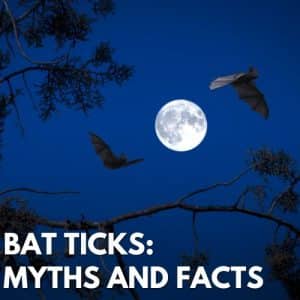
The state of Virginia is home to multiple tick species. There is also a growing number of cases of Lyme disease in the state. The deer tick is known to cause Lyme disease thrives in the northern and southern parts of the state of Virginia. The Blacklegged ticks might be active in the months of May and June in the denser regions of Virginia. This blog lets you learn more about the ticks in Virginia.
The Lone Star Ticks :
They get their names from the white dots on their backs. The females only possess these dots. The male lone star ticks, on the other hand, have small dots on the margins of their backs.
Habitat:
These ticks are common in transitional zones from forests to fields. These ticks are common in bushes and shrubs too.
Lifecycle:
The adult females require a blood meal before laying about 5,000 eggs at a time.
Hosts:
The lone star ticks are attracted to hosts through their heat and carbon dioxide. The lone star tick is found on white-tailed deer. At the same time, the nymphs and larvae prefer small rodents. The adult lone star ticks feed on large mammals.
Description
The lone star ticks are reddish-brown. These ticks are oval. The Female measures about 4 to 6 mm, whereas the males are smaller than their female counterparts.
Disease-causing vector:
These ticks carry multiple microbes. These microbes cause dangerous diseases that include monocytotropic ehrlichiosis (Ehrlichia chaffeensis), tularemia (Francisella tularensis), canine, and human granulocytic ehrlichiosis (Ehrlichia ewingii), and
southern tick-associated rash illness (STARI).
Deer Ticks:
Deer Ticks are well-known vectors of Lyme disease. These ticks may contract the disease from white foot mice. They may carry the disease throughout their life cycle.
Description:
Like most ticks, they are ⅛ an inch. They are orangish-brown in color.
Disease transmission:
The deer ticks can transmit the following diseases causing microbes
- Anaplasmosis
- Powassan virus
- human babesiosis
- human granulocytic ehrlichiosis
Brown Dog Ticks:
The brown dog ticks are reddish-brown. They are approximately ⅛ an inch in length. They have scutum like other hard-shelled ticks.
The brown dog ticks can transmit diseases that include
- babesia Vogeli
- Rickettsia conorii
- Rickettsia rickettsii
- Babesia canis
- Hepatozoon canis
- Mycoplasma haemocanis
- Coxiella burnetii
- Wolbachia spp
American Dog Ticks:
These ticks are found in grasslands. Their most preferred hosts are dogs. The American Dog Ticks might sometimes take humans as hosts apart from dogs. They might be found in the forest edges and areas with little tree cover, including grasses and scrubland.
They quest on the grasses and they stick on to the hosts at the right time. They are active in the months of April and August. They are the carriers of diseases like Rocky Mountain spotted fever (RMSF), tularemia, etc.
Conclusion:
Ticks are becoming an alarming threat in the United States. It is essential to keep yourself and your pets safe by following precautionary measures advised by the state government and preventing unnecessary tick infections and diseases in Virginia.



